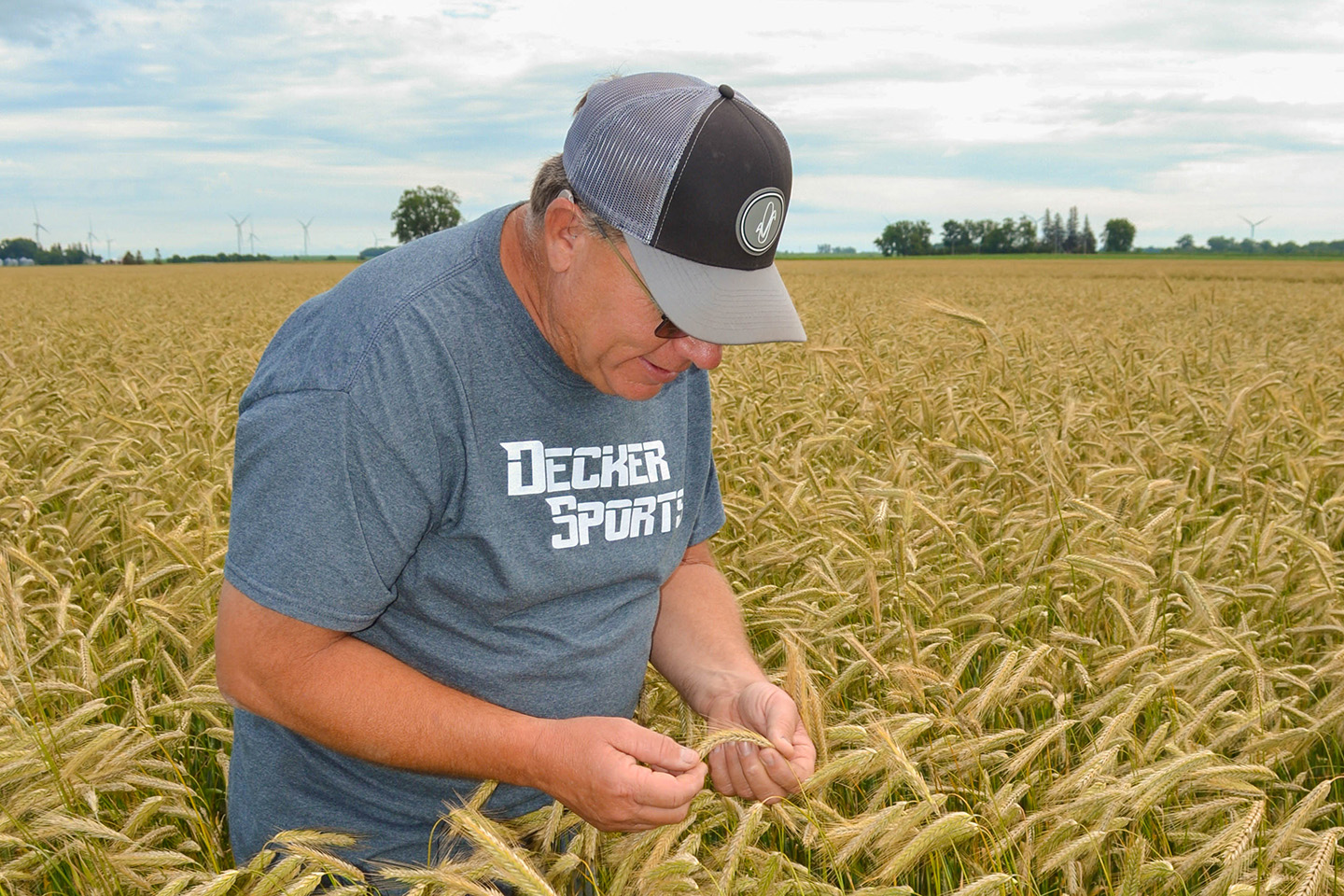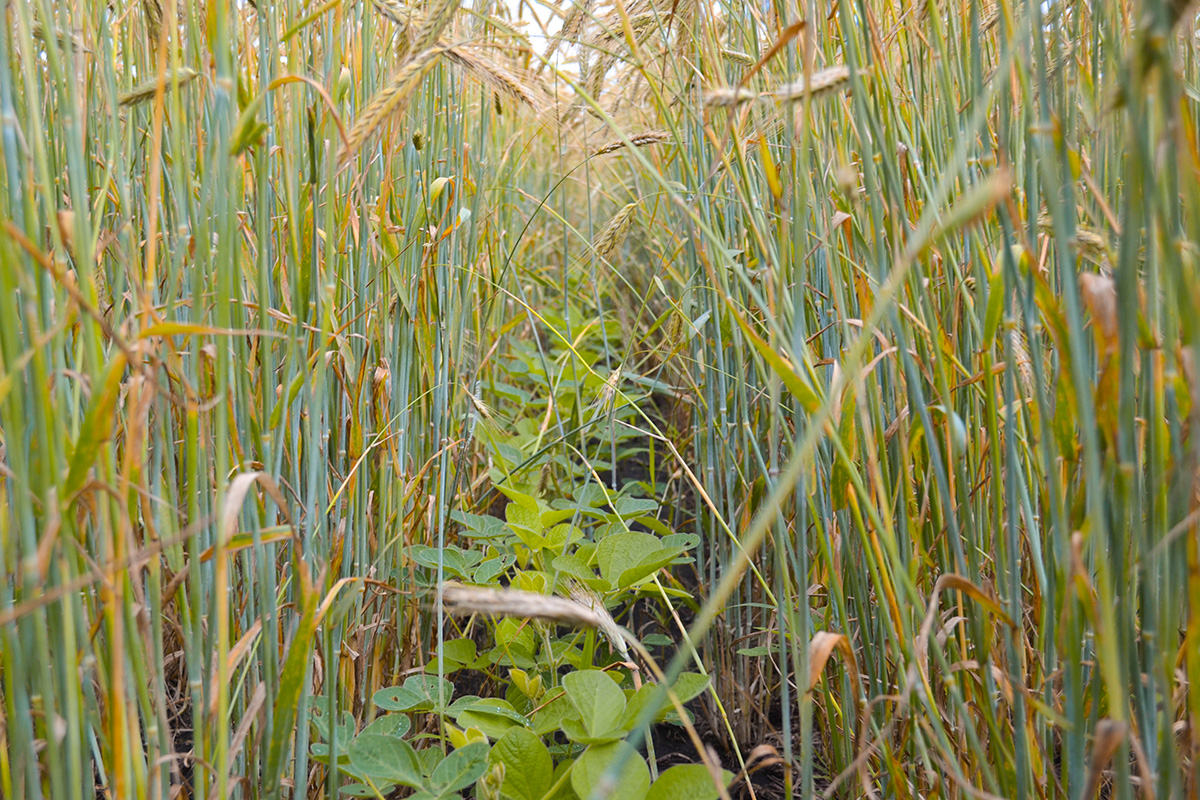
(Photo: Kriss Nelson/Iowa Soybean Association)
Relay crop trial update
August 19, 2022 | Kriss Nelson
With the assistance of Northeast Iowa Resource Conservation and Development and the Iowa Soybean Association(ISA), Russ Olson is learning about rye as a relay crop through a replicated strip trial.
Relay cropping involves seeding soybeans early in the growing season while the cereal rye is still in the vegetative growth stages. The soybeans grow with the rye, and when the rye reaches maturity, it is harvested above the canopy of soybeans. The soybeans then proceed to maturity generating two-grain crops.
The replicated strip trials aim to learn enough about relay crop planting to lay the groundwork for easy widespread adoption for Iowa farmers.
Olson uses 10-inch, twin-row spacing to drill his cereal rye on 30-inch centers and plants soybeans into the 20-inch gap in the spring. Olson planted soybeans on May 7 into standing cereal rye that was planted last fall, later than he preferred. Although soybean emergence was slow, most likely due to cool soil temperatures, there have been timely rains, and the crops have developed a good stand.

“We prefer to plant soybeans early to mid-April to give them a chance to grow ahead of the rye,” says Olson. “However, we may have stumbled onto something we might do in the future.”
As the growing season progressed, Olson noticed it might be a blessing in disguise that his soybeans were planted later to avoid competition with the cereal rye by giving it a longer opportunity to get established this spring.
“This is far from perfected science,” he says.
Olson planted both open-pollinated cereal rye and hybrid cereal rye.
“The hybrid is looking impressive,” he says. “I am curious to see how it yields. It is much more uniform.”
Alex Schaffer, ISA field services program manager, says Olson’s hybrid cereal rye crop is some of the best he has seen in the relay crop trial this year. The open-pollinated cereal rye is growing nicely, and he is excited to see the yield results.
“It will be interesting from the comparison standpoint whether or not the soybeans respond differently under a high-yielding hybrid rye versus a lower-yielding, more common open pollinated rye,” he says.
The next article in this series will include harvest and trial results.
Back